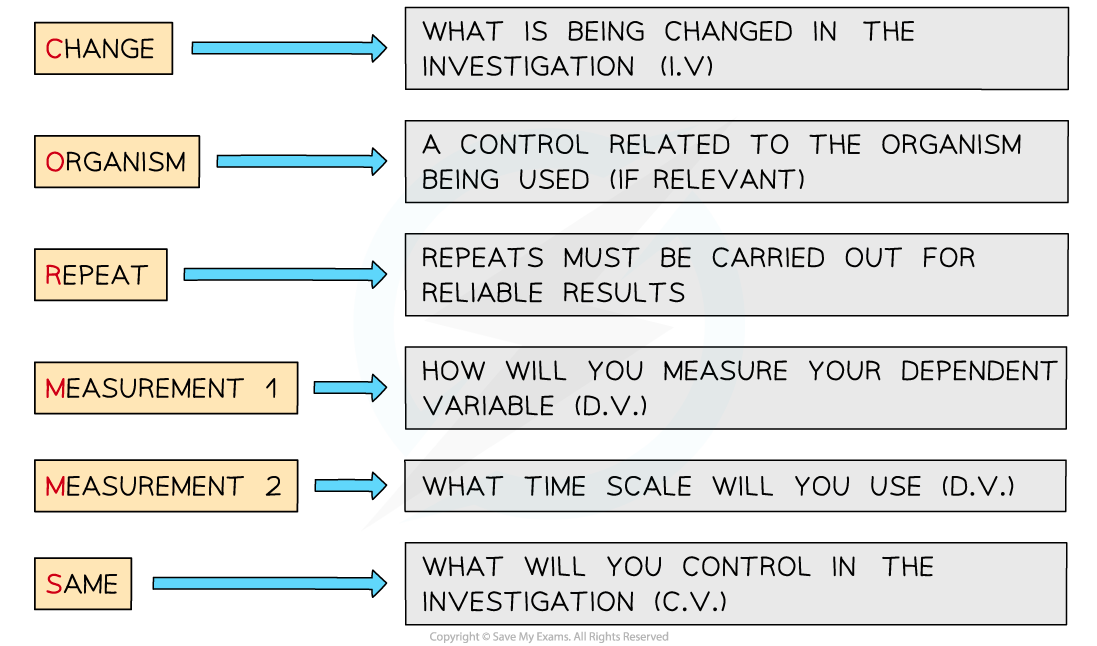Practical: The Effect of Exercise on Breathing (Edexcel IGCSE Biology: Double Science)
Revision Note

Author
LáraExpertise
Biology Lead
Practical: The Effect of Exercise on Breathing
- Exercise causes the frequency of breathing to increase in order to provide more oxygen for respiration and to pay off any subsequent oxygen debt
- We can investigate the effect of exercise on breathing using the following method
Apparatus
- Stop watch
- 2 students
Method
- Work out student A's breathing rate at rest
- Count their number breaths for 15 seconds and multiply by 4
- Repeat several times to calculate an average
- Student A should then exercise for a set time (at least 4 minutes)
- Immediately after exercising, count the breaths taken in 15 seconds and multiply by 4 to obtain the breathing rate per minute
- Compare the result to the breathing rate at rest in order to work out the change in breathing rate as a result of exercise
- Repeat this last step every minute after exercise for 5 minutes
- Repeat the process for student B
- Finally, repeat the whole investigation for each student after a period of rest
Results and analysis
- Frequency of breathing increases when exercising
- This is because muscles are working harder and aerobically respiring more and they need more oxygen to be delivered to them (and carbon dioxide removed) to keep up with the energy demand
- If they cannot meet the energy demand they will also respire anaerobically, producing lactic acid
- After exercise has finished, the breathing rate remained elevated for a period of time
- This is because the lactic acid that has built up in muscles needs to be removed as it lowers the pH of cells and can denature enzymes catalysing cell reactions
- It can only be removed by combining it with oxygen - this is known as ‘repaying the oxygen debt’
- This can be tested by seeing how long it takes after exercise for the breathing rate to return to normal
- The longer it takes, the more lactic acid produced during exercise and the greater the oxygen debt that needs to be repaid

Breathing rate during and after exercise is affected by fitness
Fitness, breathing rate and exercise
- Breathing rate during and after exercise can be an indication of fitness levels
- An unfit individual may have:
- A higher breathing rate while resting
- A more rapid increase in breathing rate during exercise
- A longer recovery period for their breathing rate to return back to a normal resting rate
Limitations
- It is important to consider the following:
- It is difficult to control all variables in relation to the students being tested e.g. fitness and food consumption prior to the exercise
- Solution: Ensure students are similar size, general fitness, age, gender and provide each with the same meal before exercise
- Activity is hard to replicate exactly for each reading
- Solution: Give students an exercise type where intensity is easier to control e.g. running at a certain speed on a treadmill or cycling with a specific power output on a watt bike
- Breathing rate can vary substantially and changes quickly after exercise finishes
- Solution: Begin counting the breathing rate as soon as the time interval begins and only measure for 15s (or less) then multiply up to calculate breaths per minute
- Students may become more fatigued throughout the duration of the investigation (especially with repeats)
- Solution: Allow significant rest breaks in between exercises and ensure that periods of exercise are not prolonged
- It is difficult to control all variables in relation to the students being tested e.g. fitness and food consumption prior to the exercise
Applying CORMS to practical work
- When working with practical investigations, remember to consider your CORMS evaluation

CORMS evaluation
- In this investigation, your evaluation should look something like this:
- Change - We will change whether the student has exercised or not
- Organisms - The students should be of the same age, gender, size and general fitness
- Repeat - We will repeat the investigation several times to ensure our results are reliable
- Measurement 1 - We will measure the change in breathing rate
- Measurement 2 - ...immediately after exercise and each minute for the subsequent 5 minutes
- Same - We will control the type of exercise carried out, the temperature of the environment, the food intake of the students prior to the investigation

You've read 0 of your 0 free revision notes
Get unlimited access
to absolutely everything:
- Downloadable PDFs
- Unlimited Revision Notes
- Topic Questions
- Past Papers
- Model Answers
- Videos (Maths and Science)
Did this page help you?